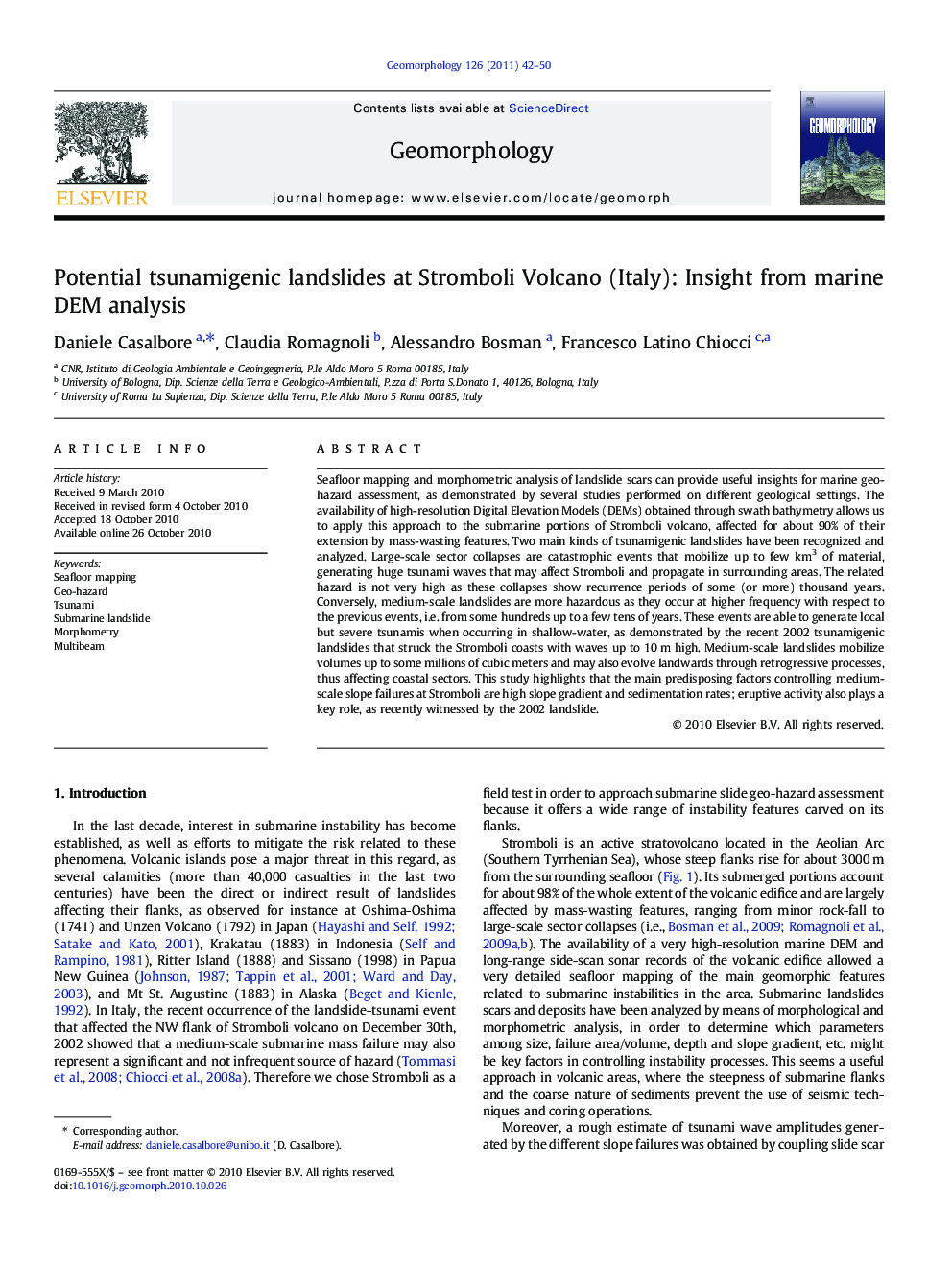| Article ID | Journal | Published Year | Pages | File Type |
|---|---|---|---|---|
| 4685661 | Geomorphology | 2011 | 9 Pages |
Seafloor mapping and morphometric analysis of landslide scars can provide useful insights for marine geo-hazard assessment, as demonstrated by several studies performed on different geological settings. The availability of high-resolution Digital Elevation Models (DEMs) obtained through swath bathymetry allows us to apply this approach to the submarine portions of Stromboli volcano, affected for about 90% of their extension by mass-wasting features. Two main kinds of tsunamigenic landslides have been recognized and analyzed. Large-scale sector collapses are catastrophic events that mobilize up to few km3 of material, generating huge tsunami waves that may affect Stromboli and propagate in surrounding areas. The related hazard is not very high as these collapses show recurrence periods of some (or more) thousand years. Conversely, medium-scale landslides are more hazardous as they occur at higher frequency with respect to the previous events, i.e. from some hundreds up to a few tens of years. These events are able to generate local but severe tsunamis when occurring in shallow-water, as demonstrated by the recent 2002 tsunamigenic landslides that struck the Stromboli coasts with waves up to 10 m high. Medium-scale landslides mobilize volumes up to some millions of cubic meters and may also evolve landwards through retrogressive processes, thus affecting coastal sectors. This study highlights that the main predisposing factors controlling medium-scale slope failures at Stromboli are high slope gradient and sedimentation rates; eruptive activity also plays a key role, as recently witnessed by the 2002 landslide.
